How does a Pressure Sensor Work - Physics of Probeware
Introduction to Pressure Sensors
Pressure sensors are one of the most widely used sensors and can be found in probeware for lab measurements, but more commonly in billions of devices including smartphones, wearables, automobiles, drones, weather centers, and medical instruments. Pressure sensors were one of the first sensors to be miniaturized and mass produced at a low cost through microelectromechanical systems (MEMS) fabrication.
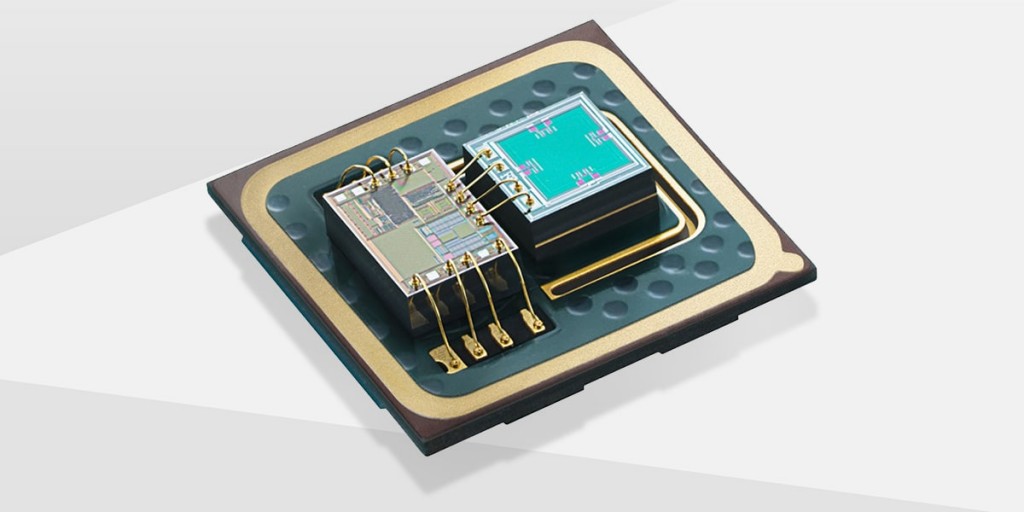
This article will explain:
- Mechanical and electrical principle of operation of pressure sensors
- The design of modern commercial pressure sensors
- Pressure sensor applications
- Experiments and activities to explore the capabilities of pressure sensors
You can investigate these concepts on your own using:
- The PocketLab Voyager, which contains a MEMS pressure sensor, the Bosch BME280
- The PocketLab One, which contains a similar MEMS pressure sensor, the Bosch BMP280
- The pressure sensors internal to your smartphone using programs like Science Journal or PhyPhox
- The PASCO Wireless Altimeter, PASCO Wireless Pressure Sensor, or the Vernier Go Direct Gas Pressure Sensors
Mechanical Operating Principles
All modern pressure sensors use the same basic working principle and same overall design. The pressure sensor has a thin membrane that is flexible and can deform. The membrane covers a reference cavity. The reference cavity is typically sealed at a low vacuum pressure. When there is a higher pressure outside than inside the reference cavity, the membrane stretches or deforms into the reference cavity. The membrane is attached to a rigid frame, so that all the deformation occurs in the membrane and not the frame.
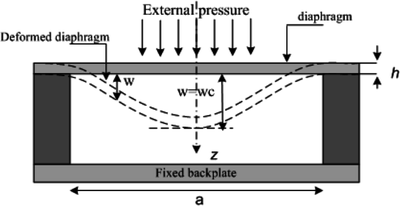
Sometimes the cavity is not sealed and is instead exposed to a known reference pressure. In this case, the pressure differential between the outside pressure and the reference pressure causes the membrane deformation. The exposed cavity design is more common in industrial applications, and the sealed cavity is used in almost all consumer devices and applications.
The deformation of the membrane causes two mechanical changes that we can use for transduction to an electrical measurement. First, the membrane moves relative to the bottom of the cavity which we can measure with a capacitance circuit. Second, the membrane material experiences stress and strain which we can measure with a resistive circuit.
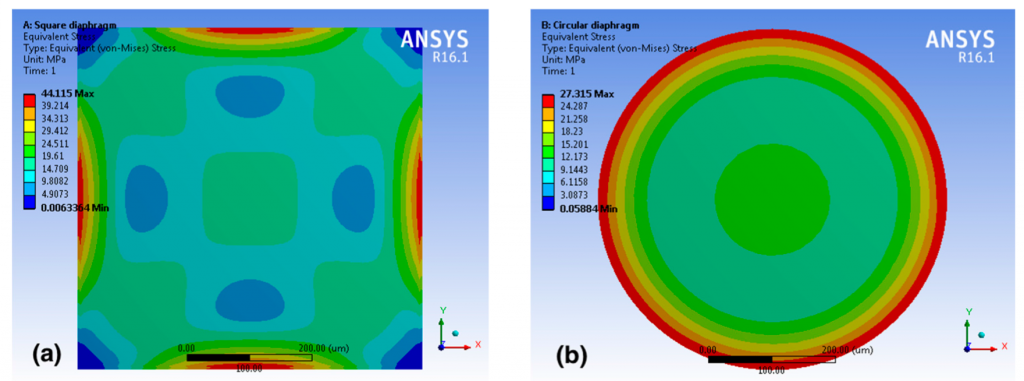
Y. Guo, et al. Sensors 2016, 16(1), 55; doi:10.3390/s16010055
The mathematical equations for calculating the displacement, stress, or strain in the membrane are fairly complex. With some assumptions about geometry and operating conditions, you can simplify the calculations. To learn more check out these resources:
- Handbook of Modern Sensors by Jacob Fraden
- Microsystem Design by Stephen Senturia
Electrical Operating Principle
In order to measure the displacement of the membrane, we can put the sensor into a capacitive measurement circuit. Electrodes are built into the top membrane and the bottom surface of the reference cavity. These electrodes act as a parallel plate capacitor. The capacitance between the plates is equal to C = eoer*A/d
Where e0 is the electrical permittivity of free space, er is the relative permittivity, A is the area of the plate, and d is the distance between the plates. As the membrane deforms, the distance, d, decreases, which increases the capacitance. A variety of electrical circuits can be used to convert the change in capacitance to a change in voltage which can be measured and converted into a digital signal.
The second electrical measurement method is to measure the strain in the membrane. Any conductive material, like metal, will change resistance when a stress or strain is applied to it. These devices are appropriately called strain gauges. Semiconductor materials, like doped silicon, experience a large change in resistance due to strain because of a material property called, piezoresistance. A large change in resistance is helpful for the sensor design, so most modern pressure sensors use a piezoresistive strain gauge to convert the mechanical forces into electrical changes.
Four piezoresistors are designed around the membrane and connected in a circuit called a Wheatstone bridge. The Wheatstone bridge increases the measurement signal and decreases sensor error from things like temperature change and other mechanical stresses. The Wheatstone bridge signal is amplified and then converted to a digital signal.
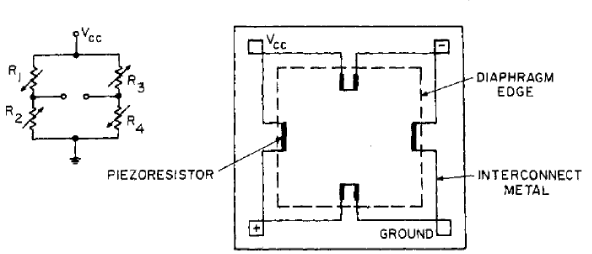
Example Commercial Pressure Sensor
The BME280 is an integrated environmental sensor from Bosch that contains a pressure, humidity, and temperature sensor. The pressure sensors is fabricated in a MEMS process and uses piezoresistors to measure the pressure induced strain in a square membrane. In the electron microscope image below, you can see the large square silicon chip on the bottom is the pressure sensor and the smaller rectangular chip is the humidity sensor. The scale bar on the image is 200 um long, so the pressure sensor is roughly 800 um x 800 um. In the highest resolution setting, the BME280 can measure just 0.2 Pa of pressure change, which is equivalent to 1.7 cm of altitude change! That’s impressive for a device that’s not even 1 mm squared in size.

The PocketLab Voyager uses the BME280 for barometric pressure and altitude measurements. The video below uses the BME280 in the PocketLab Voyager to measure the altitude of a pump rocket. The altitude data is synced to the video using the PocketLab iOS app.
Pressure Sensor Applications
Most high-end smartphones since the Samsung Galaxy S4 era have included a MEMS pressure sensor in their suite of onboard sensors to go along with the accelerometer, gyroscope, magnetometer, and light sensor. This accounts for hundred of millions of pressure sensors globally. The main application in smartphones is to augment GPS navigation data for additional altitude measurements.
Modern automobiles contain several pressure sensors for:
- Manifold air pressure
- Barometric pressure
- Tire pressure monitoring systems
- Gas tank pressure
- Sometimes to detect side impact crashes for airbag deployment and safety systems

There are hundreds more applications of pressure sensors in industrial, medical, consumer, and instrumentation applications.
Some novel pressure sensor use cases could be to measure the speed of vehicles passing by on the roadway. In the data below, we measure the pressure wave created by driving the car over our sensor system at various speeds. You can see as the car approaches, we can measure a pressure wave and then as the car passes we can measure the wake behind the car. The magnitude of the pressure change increase with vehicle speed.

The graph below shows a pressure wave created by opening a door in an office measured with a differential pressure sensor. To learn more go to the Sensirion Lab page here.
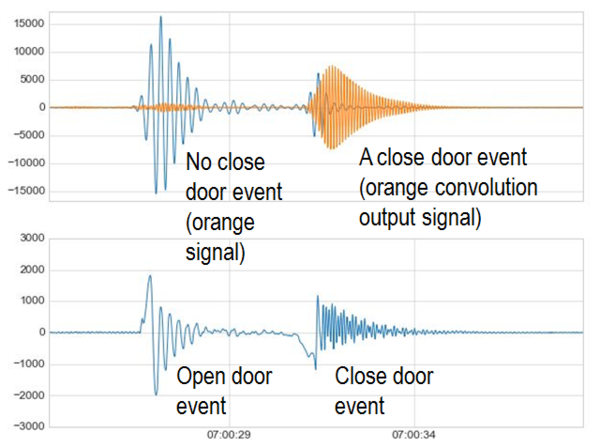
Science Activities using Pressure Sensors
- Measure hydrostatic fluid pressure
- Investigate the Ideal Gas Law using a syringe
- Investigate Gay-Lussac's Law with a mason jar


